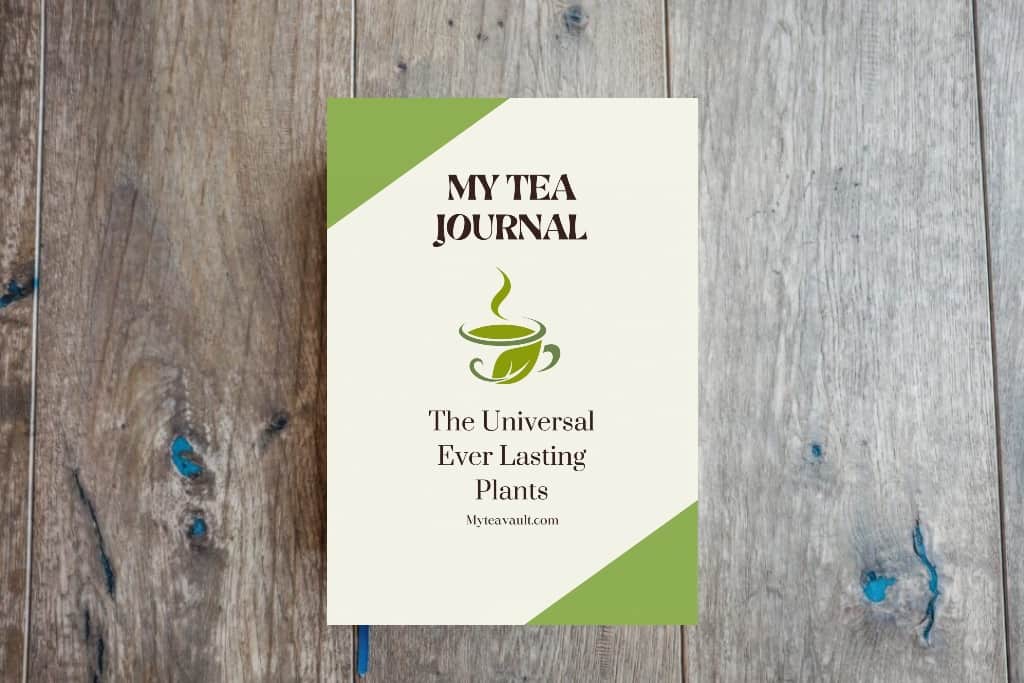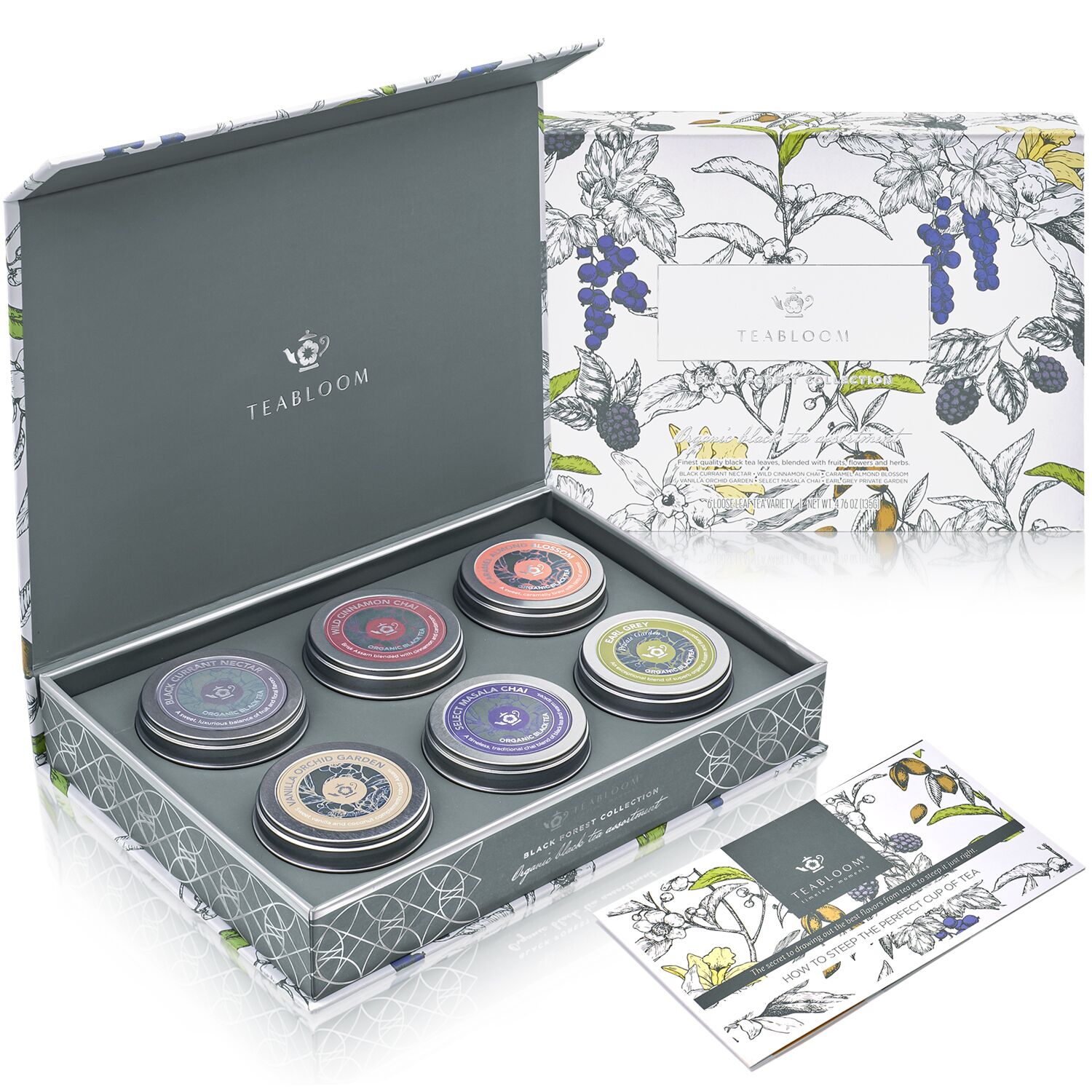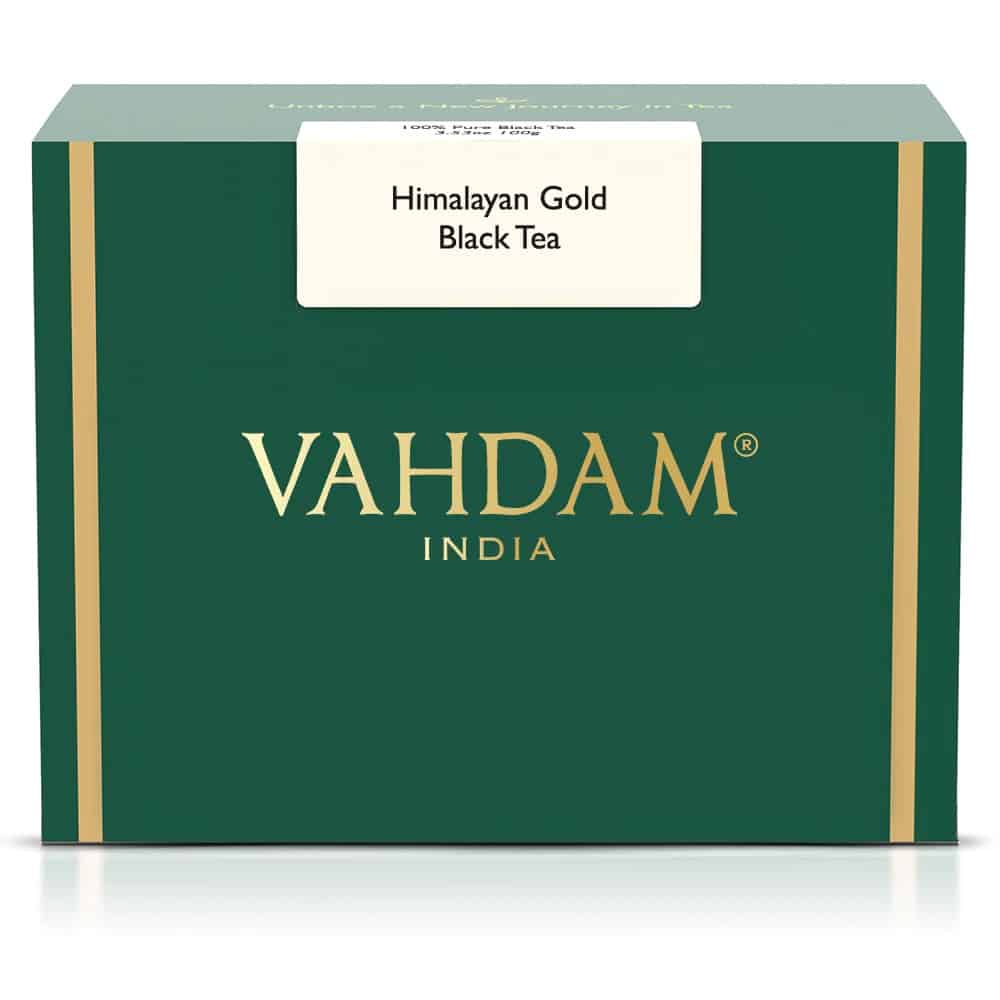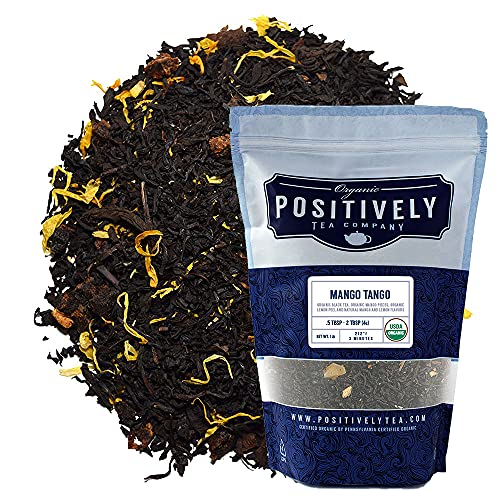Oh for the taste of tea. The desire and the love of a beverage that has been and will continue to be enjoyed by people from all over the world.
It is the best beverage all around. It’s a great beverage to cool you down or warm you up. It’s medicinal and it can rev you up or calm you down. It’s the all-around perfect beverage.
What about the taste of tea? Tea is complex, as you can see in the above paragraph. Tea can go from mild to bold.
If you are new to tea, welcome. Enjoy the journey to finding the teas that please your palette. Use this article to help direct you on your journey of tea discovery. I’ve used my tea journal for years to remember the good and the bad but to remember the experience with each cup. Here’s to finding your favorite tea taste!
The missing tool that perfected my brewing process and gave my friends tea experiences they still talk about.
What Flavors Can You Find in Tea?
Let’s take a closer look at the variety of teas and how they taste.
For a more in-depth look at tea, flavors check out the journal above. It contains a specific tea-tasting wheel dedicated to the taste of tea.
As complex as tea can be I broke down some common tea flavors:
- Floral: Many teas have a floral flavor. These flavors can range from light and subtle to strong and overpowering. Some popular floral teas include jasmine, lavender, and rose.
- Fruity: Tea can also have a fruity flavor. These teas can come from the tea leaves themselves or from added fruit flavors. Some fruity teas include apricot, cherry, and peach.
- Earthy: Some teas have an earthy, woody flavor. The flavor can come from the tea leaves or from added herbs like sage or rosemary.
- Nutty: Some teas have a nutty flavor, which can come from the tea leaves themselves or from added nut flavors like almond or hazelnut.
- Spicy: Tea can also have a spicy flavor, which can come from added spices like cinnamon, ginger, or cloves.
Gary Vaynerchuk of Vayner media used to host a wine-tasting event live. This was the start of his days. He would taste wine and say it would taste like this or that, and sometimes he would say tea tasted like mud. How did he know? Because Gary said he tasted mud or tobacco. Once I said tea tasted like dirty dishwater. And it did, and I know how dirty dishwater tastes.

How to taste tea
To make sure you get the best flavor from your tea follow a few simple steps. To appreciate the tea flavors try starting with these steps first. When you get to the point you are ready to experiment, try different waters, temperatures, and even vessels to see the change in flavors.
- A clean palate: Make sure prior to tasting your tea you’ve not had any strong-smelling or spicy foods or herbs. You can brush your teeth ahead of time, so make sure to rinse.
- Water temperature: I always recommend using the temperature of water recommended. Remember different teas require different water temperatures.
- Timing (steeping): The length of time that you steep a tea is everything. Follow the instructions to get the most flavor from your tea. Remember, again, different teas have different timing.
- Smelling: I mentioned this earlier, it’s not worth it to smell a tea prior to brewing. After brewing it is amazing. Take a deep breath and enjoy the aroma and what comes next.
- First sip: Make sure it’s not too hot and when it’s time take a tiny sip. Hold it for a few seconds, swish, and swallow. This allows all the tasting sensation from all your taste buds.
- Note-taking: This is one of the most important steps. Taking notes on your teas gives you a guide to what you liked and disliked about the flavor of your tea. It builds a case for trial and error as well.
What’s Your Favorite Tea?
Types of Tea
While there are several different teas they all have one thing in common. Camilla Sinensis. Camilla Sinensis is the plant name for all things tea. All teas come or are derived from this plant. The difference comes from the way the tea is processed. From green with little processing, to
Within each tea, the category is countless teas to try. Today we will start with the main types of tea and a few suggestions to try.
Black tea is classic and one my grandmother made for me. It’s strong and bold. The tea leaves have been oxidized. Classic black teas are dark, rich, and strong.
Flavors most associated with
- Tobacco
- Malt
- Cocoa
- Smoke
- Mahogany
White tea is light and delicate and made from the top of young leaves and buds. It has not been oxidized. White tea has a light color and soft flavor.
Flavors most associated with white tea are
- Floral
- Honey
- Fruity
I like to call Oolong tea a cross between the full and the non-oxidized. It’s partially oxidized giving the tea a unique flavor and color. It’s a cross between black and green teas.
Flavors most associated with oolong tea are:
- Floral
- Fruity
- Caramel
- Honey
Green tea has been oxidized minimally. It’s known for its light color and grassy notes. The flavor is compared to being fresh and light.
Flavors most associated with green tea are:
- Grassy
- Nutty
- Floral
- Hay
Yellow tea is rare and if you get a chance to try it, do! It’s a delicate tea that is lightly oxidized and steamed. Yellow tea is a light airy brew.
Flavors most associated with yellow tea are:
- Honey
- Fruity
- Apricots
The following are not exactly teas but are often referred to as tea in the tea community. These are all the things we brew in hot water and pour ourselves a cup to drink. They can be a flower, fruit, spice, root, or plant leaf. Many, if not all have been used medicinally for hundreds of years.
Some more common herbal teas include:
- Peppermint
- Chamomile
- Licorice
- Rose
- Jasmine
- Clove
This list can go on and on, I’ve already thought of a few more. But these are beautiful experiences to add to your journal. My favorite is licorice because it’s sweet.
Many of the herbals can be combined with your teas to create beautiful blends to try.
Black Forest is a curated collection of our most popular flavored black teas.
But What About Those Tea Flavors
I still remember my first cup of tea. I talk about it often throughout the blog. The occasion was more special than what was in my cup. Lipton tea with about 5-10 sugar cubes, whatever I could sneak into the cup. On the occasion, my grandmother and I. The best cup of tea ever. The taste? Pure sugar.
The more advanced me loves an earthy bug-bitten tea, it’s my favorite, The flavor of a bug-bitten tea is unique, and earthy with a slight sweetness and floral.
Tea is complex and simple all in the same world and definitely in your cup. The flavors can range from subtle to robust and everywhere in between. With some trial and error, you will find a tea that “does it for you”.
What gives the tea its flavor? Tannins. Tannins are
What does it for me is
From the cool and crisp Eastern Himalayan slopes, an exquisite Black tea with shiny golden tips
But it changes and in the summer these are my favorite summer teas (iced)
As we discussed earlier, the variety of teas is so great. We will discuss in general tea notes or flavors per category. This will give you a head start on your tea-tasting journey and help you find a tea variety that’s right for you.
There are a few factors that affect the tea taste.
Tea Plant: I know I said that all tea comes from Camellia Sinensis and that is correct. With any plant, there are different variations. So while you have
Growth: where did your tea come from? What were the growing conditions? These say a lot about the tea and its taste. From the soil to the area (mountains, plains, valleys), was it by a river or not? So many geological things to consider in your tea. (It’s pretty interesting). Tea grown in high areas tend to have more flavor than those grown at lower elevations.
Production: The process by which your tea has been processed says a lot about its flavor. Was the tea fermented, heated, laid in the sun, or minimally if at all processed? How it was processed will determine if your tea is robust, mild, or somewhere in between.
How old is your tea?: The age of your tea depends (as with most foods) on how your tea will taste. If it’s new and fresh you can almost taste the aroma. The older a tea gets there can be loss of flavor.
Brewing: Mentioned earlier and still so important. How you brew your tea will make a difference in the taste. Remember to start with the instructions then find “your way” as you grow and learn.
Water: I use only filtered water. But even with filtered water, you can get a different taste than, let’s say, spring water or alkaline water. There are even specialty waters you can enjoy your tea with.
Vessel: Often overlooked your brewing vessel. Both brewing and drinking can influence the tea flavor. Glass, stainless steel, porcelain, china, and more can make a big difference. Avoid microwaves and plastic as both of those are not conducive to a great cup of any type of tea.
High-end French tea, bagged, Imported tea packed in France.
Taste of green tea, spearmint, peppermint leaves, mint
What Gives Tea Its Flavor
Tea gets its flavor from a combination of different compounds that are present in the tea leaves. These include
- Catechins: Catechins are a type of polyphenol that gives the tea a bitterness and astringency characteristic. Catechins add healthy benefits to tea like being an antioxidant and anti-inflammatory agent.
- Theanine: Theanine is an amino acid giving the tea its savory or umami flavor. Theanine calms the soul and is relaxing.
- Tannins are just one more polyphenol in plants and tea plants that gives character to your tea taste. Tannins give the tea a bitter or astringent taste.
- Caffeine: Found in coffee, chocolate, and yes, tea. Caffeine is a natural stimulant that adds to the bitterness of the tea. Caffeine also gives its drinkers a boost of energy.
- Essential oils: teas contain small amounts of essential oils naturally. When brewed the oils add to the taste and aroma of the tea.
So much goes into the making or creating of that cup of tea. For just one cup we go all the way back to its roots, literally. You are going to have a fantastic journey and I hope you do take notes, it’s worth the small effort to keep track of what you like, and what you don’t. What worked and what did not?
Tea Flavors
Fruity: Simple to explain, interesting to taste. Fruity flavors come from either fruit being added to our teas or an infusion of fruits into a classic tea. Fruity teas can sometimes be sour and sweet. Fruity teas could be called dessert teas. Fruity teas make great iced teas.
Floral: Two of the best florals I’ve had are lotus flower or jasmine flower-infused teas. My favorite. Some other floral teas can include rose, apple, lavender, and the all-time soothing favorite chamomile.
Spicy: Teas with a bit of a bite. Minus a fad that went around a few years ago adding chili to our teas has faded away. Today we love the bite of ginger, turmeric, and clover. Mentioning these spices brings us to a fall classic; Chai.
Nutty: A great tea with a nutty flavor is Japanese Hojicha. Hojicha is roasted and not steamed giving it that roasted nutty flavor. There are many teas that add nuts to the brew giving that cup of tea a nutty flavor. Try pistachio, walnut, or even pecans.
Sweet: Minus the thought of putting sweetener in your tea there are a few other ways to enjoy a sweet tea. Adding raspberry leaf or licorice to a tea will create a sweet flavor. Other sweet teas include rooibos or honeybush.
Bitter: Bitter tea can be a choice or a cause. If you do not brew a tea correctly you can end with a very bitter taste. That’s not good. There are some teas that are naturally bitter: some black teas and yellow teas can be naturally bitter. If you want to try a bitter tea Japanese tea Kuding is one of the most bitter teas in the world, gaining a nickname of bitter nail tea. P.S. It’s also the healthiest tea.
Smoky: One of the most known smokey tea is Lapsong Souchong, very smoky and a classic. Other teas that carry on the smoky flavor are Chinese Keemun and Vietnamese Golden Tips. These teas are roasted over burning wood, generally pine. These teas are strong.
Herbal: An herbal flavor comes from the teas we call tisanes. They include all the fruits, herbs, spices, flowers, plants, roots, and more that we brew into the water and call tea. The flavors can be wide and vary depending on what herb is used.
Rich: I had a Scottish Breakfast tea, Whew, it was rich. Rich dark teas have their place and they are definitely a wake-up call. Some of those teas are Assam black, Lapsang Souchong, and most Pu’erh.
Sour: Most sour teas that I taste contain fruit, mostly apples. This gives the tea that sour punch. Other teas that contain a sour fusion are hibiscus or cherry.
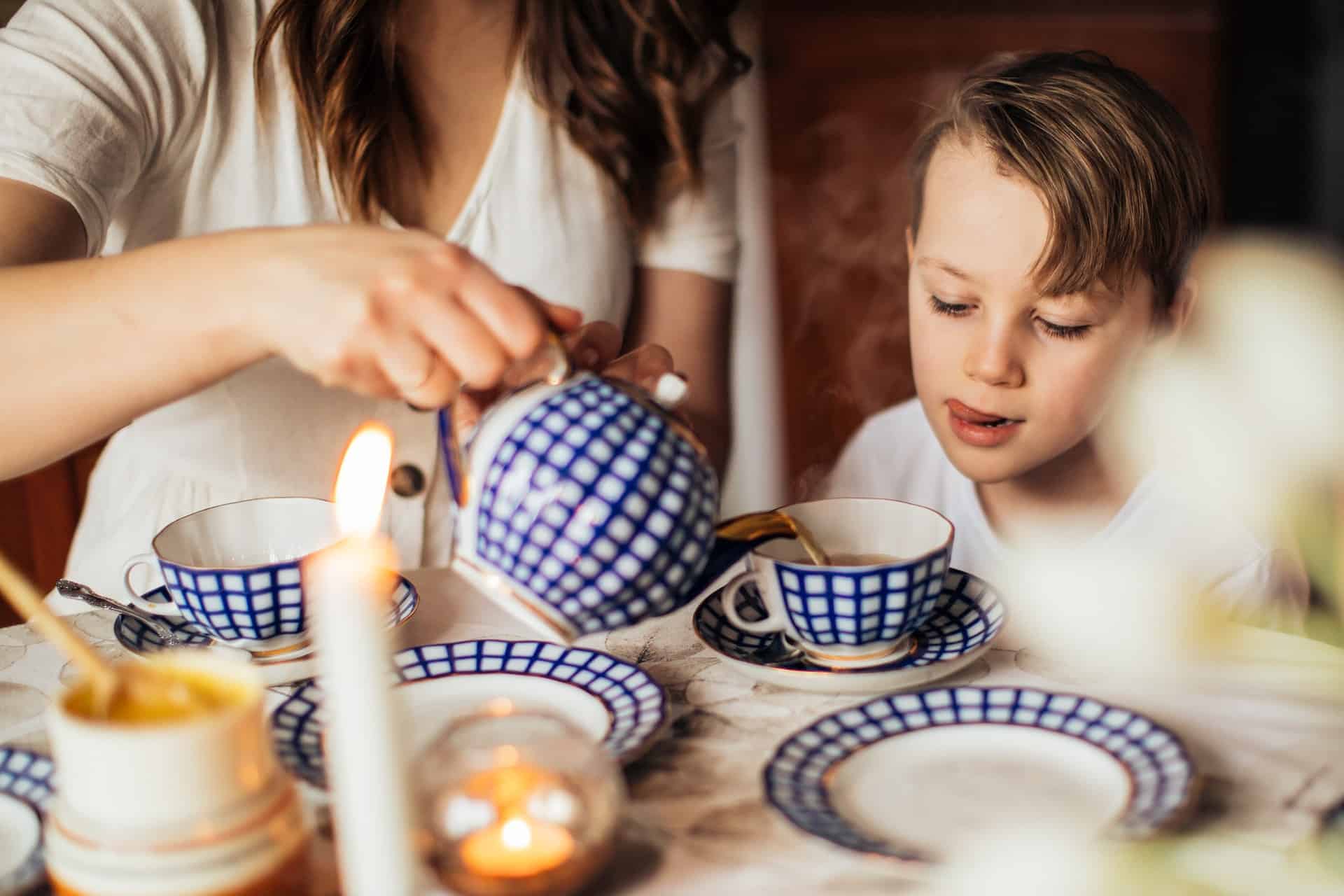
Conclusion
Tea is a complex beverage that can offer a wide range of flavors. From the bold, robust flavor of

